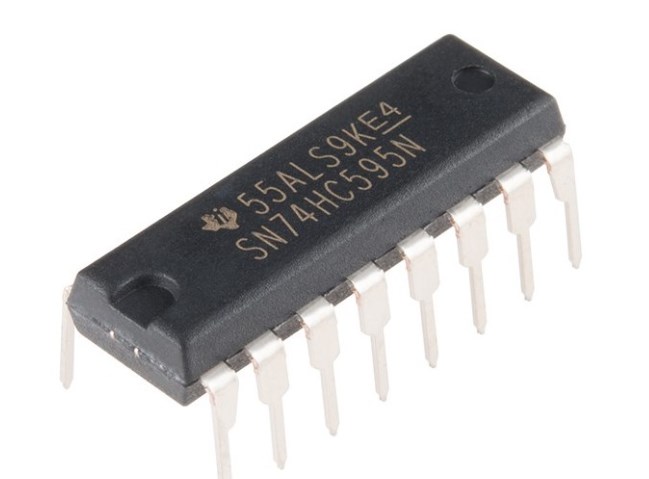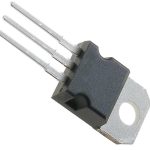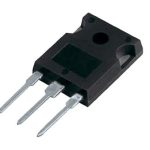The SN74HC595N is a versatile integrated circuit that serves as an 8-bit shift register with output latches. It allows you to expand the number of outputs on your microcontroller or other digital devices without using too many pins. In this blog, we will explore the features and functionality of the SN74HC595N, providing you with a comprehensive understanding of how to utilize this powerful component in your projects.
What is the SN74HC595N?
The SN74HC595N is a specific model of the 74HC595 shift register, which is an integrated circuit (IC) commonly used in digital electronics. It is manufactured by Texas Instruments and offers 8-bit serial-in, parallel-out functionality with output latches.
What does SN74HC595N do?
The SN74HC595N allows for the expansion of output capabilities on microcontrollers or other digital devices. By using this shift register, you can control multiple output pins using only a few pins from the microcontroller. It effectively increases the number of outputs available without requiring additional hardware.
Features of SN74HC595N
- 8-bit serial-in, parallel-out shift register with output latches.
- Wide supply voltage range: 2V to 6V.
- Compatibility with both TTL and CMOS logic levels.
- Low power consumption.
- High output drive capability.
- Cascadable design for expanding output capabilities further.
- Output pins that can be individually controlled.
- Integrated latches for holding the output data.
ECAD Model

Pin Out

Datasheet
You can download the SN74HC595N datasheet here now!
Applications of of SN74HC595N
- LED matrix displays: You can use the shift register to control multiple LEDs and create patterns or scrolling messages.
- Seven-segment displays: It enables driving multiple seven-segment displays with limited pins.
- Multiplexing: The shift register allows multiplexing various devices, such as switches or sensors, by expanding the number of available input/output lines.
- Driving relays or other high-current devices: By using the output pins to control transistors or drivers, you can switch on/off higher current devices.
- Data storage and retrieval: The SN74HC595N can be used to store data temporarily in projects like data loggers or memory banks.
How to use SN74HC595N with Arduino?
To use the SN74HC595N with Arduino, you need to connect the relevant pins of the IC to the appropriate pins on the Arduino board. Here’s a step-by-step guide:
- Connect the DS (Serial Data Input) pin of the SN74HC595N to any digital pin on the Arduino (e.g., Pin 11).
- Connect the SHCP (Shift Register Clock Input) pin of the SN74HC595N to another digital pin on the Arduino (e.g., Pin 12).
- Connect the STCP (Storage Register Clock Input) pin of the SN74HC595N to a third digital pin on the Arduino (e.g., Pin 8).
- Connect the OE (Output Enable) pin of the SN74HC595N to ground.
- Connect the MR (Master Reset) pin of the SN74HC595N to VCC (5V).
- Connect the VCC and GND pins of the SN74HC595N to the appropriate power supply.
Once you have made these connections, you can use the Arduino code to control the output pins of the SN74HC595N. By shifting in data serially through the DS pin and then latching it to the output pins using the SHCP and STCP pins, you can control various devices connected to those output pins.
FAQs
What is 74HC595?
The 74HC595 is an integrated circuit (IC) commonly known as an 8-bit shift register with output latches. It is used to expand the number of outputs available on a microcontroller or other digital devices.
What type of shift register is 74HC595?
The 74HC595 is a serial-in, parallel-out (SIPO) shift register. This means that data is shifted into the IC serially (bit by bit) and then transferred to its output pins in parallel (all at once). It has eight output pins, which can be individually controlled using only three pins from a microcontroller.
What is the voltage of 74HC595?
The 74HC595 operates with a supply voltage range of 2V to 6V. It is designed to work with both TTL (Transistor-Transistor Logic) and CMOS (Complementary Metal-Oxide-Semiconductor) logic levels.
How does a 8 bit shift register work?
An 8-bit shift register like the 74HC595 works by sequentially shifting bits into the IC and then latching them onto the output pins. The shift register has an input pin called Serial Data Input (DS), where the data is fed in one bit at a time. It also has a clock input pin (SHCP) and a latch enable input pin (STCP).
To load data into the shift register, you provide a clock pulse on the SHCP pin while simultaneously feeding in the data on the DS pin. Each clock pulse shifts the data one bit to the right, effectively storing it in a chain of flip-flops within the IC. Once all eight bits have been shifted in, another clock pulse on the STCP pin will transfer the stored data to the output pins.
Conclusion
In conclusion, the SN74HC595N is an invaluable tool for expanding output capabilities when working with microcontrollers or digital devices. Its ability to handle 8 bits of data serially and output them in parallel makes it a popular choice among hobbyists and professionals alike. By following the steps outlined in this blog, you can effectively integrate the SN74HC595N with your Arduino projects, opening up a world of possibilities for controlling multiple devices with minimal pin usage.




